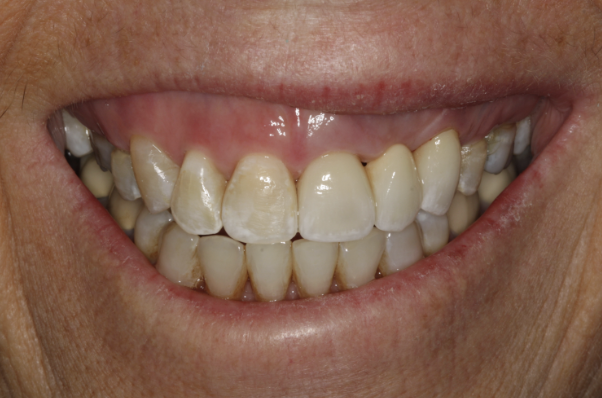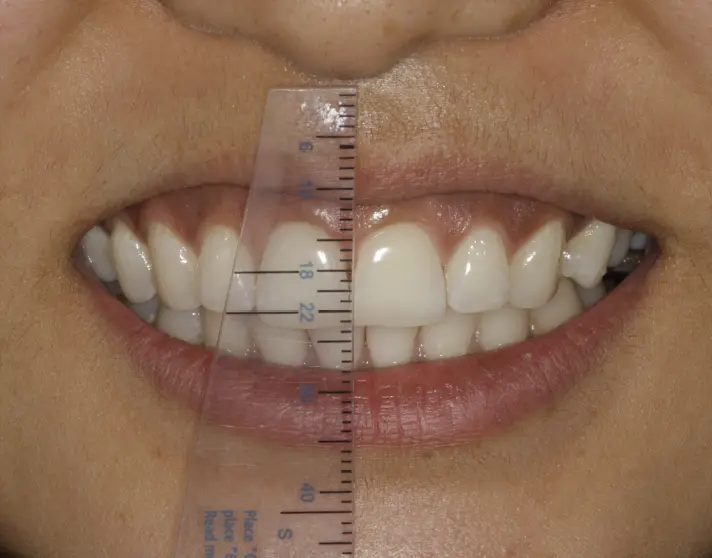Treatments for gummy smile are not one-size-fits-all. I recommend taking five measurements to ensure you are treating for the correct underlying problem.

I’d venture to say that we’ve all met someone who was looking for a solution for their gummy smile. This person sometimes isn’t even aware of their gummy smile, but they know that they don’t like their smile for some reason. Well how do we help them? Take a quick look at this example photo. Now instead of jumping to treatment options (crown lengthening, veneers, lip repositioning, etc…), I encourage you to take a step back and determine the diagnosis first. If you do, the treatment options available will become obvious!
Gummy Smile Measurements
There are five measurements that I take in order to diagnose a gummy smile.
1. Facial Thirds: Measure from the glabella to base of nose, and base of nose to inferior border of chin. The middle and lower 1/3 should be equal.
2. Lip Length and Mobility: Measure the lip length in repose and at high smile. The difference is the mobility. The average lip LENGTH is 22-24mm. The normal lip MOBILITY is <8mm.
3. Gingival Line: Draw a line across the gingival margins of the canines and centrals. The line should be even. If concave, it may indicate dento-alveolar extrusion.
4. Tooth Size: The average central incisor length is 9-11mm, and ideally has a 1.2 : 1.0 height to width ratio. When a tooth is short, it could indicate DAE, anatomic variation, or altered passive eruption.
5. CEJ Detectable: Altered passive eruption can be diagnosed if the CEJs are undetectable.


Clinical Example: Let’s Look at this Case
After taking our measurements, we can now make a diagnosis for this patient. Notice her measurements highlighted in bold.
- Mid face = 62mm, Lower face = 54mm
- Lip length = 22mm, Lip mobility = 11mm
- Gingival line = straight
- Tooth size = normal
- CEJ = detected
Her mid-face is longer than her lower-face, which indicates that she may have vertical maxillary excess (VME). In addition, her lip mobility is higher than normal, which indicates a hypermobile lip. This example illustrates that patients may have more than one diagnosis contributing to their gummy smile!
Treatment Options
Once the diagnosis is made, each diagnosis then correlates to Treatment Options. For this patient, the treatment options for her hypermobile lip could include a lip repositioning surgery and/or botox. Treatment options for her (VME) could include a surgical maxillary impaction. Because she had a normal tooth size with the CEJ detected, crown lengthening would not be indicated. And because her gingival line was straight, orthodontics may not be indicated to help her gummy smile. In the end, she elected no treatment for her gummy smile. So did you guess correctly?

Recent Comments